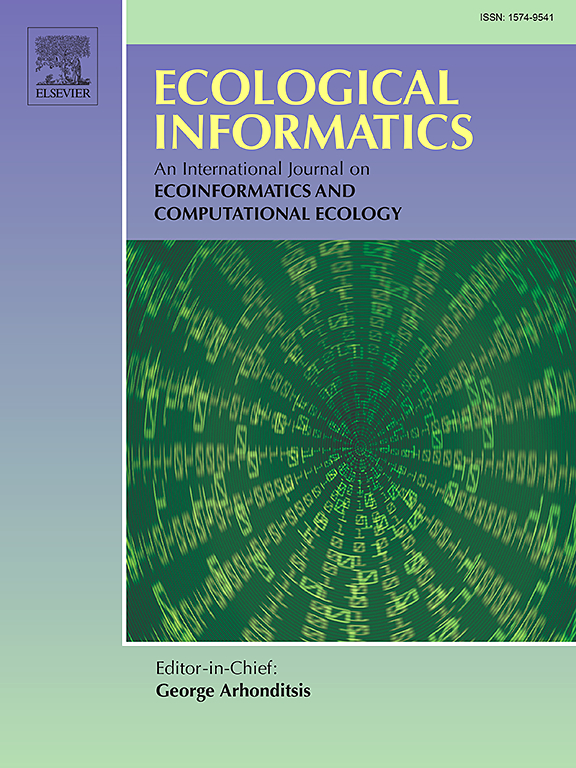Correcting forest aboveground biomass biases by incorporating independent canopy height retrieval with conventional machine learning models using GEDI and ICESat-2 data
IF 5.8
2区 环境科学与生态学
Q1 ECOLOGY
引用次数: 0
Abstract
Spaceborne LiDAR satellites, including GEDI and ICESat-2, have shown significant potential in estimating aboveground biomass (AGB) using machine learning (ML) methods. In contrast to advances focused on the refinement of ML algorithms, this study aims to enhance AGB estimation accuracy by integrating an additional Canopy Height (CH) information. To obtain CH data, this study utilized three spaceborne LiDAR datasets: ICESat-2 ATL08, ICESat-2 ATL03/ATL08 fusion data, and GEDI-L2A. Random Forest (RF) and Monte Carlo-based uncertainty analysis were employed to evaluate the most suitable spaceborne LiDAR dataset for CH estimation. The accuracy of CH features in AGB estimation was then compared using both Linear Regression (LR) and RF models. The spectral saturation point was computed using a semi-variance function, and the contribution of CH features to AGB estimates was quantified across different gradients, especially when AGB neared or surpassed the saturation point. The findings demonstrate that the ATL03/08 fusion dataset surpasses the other datasets in terms of CH estimation accuracy and uncertainty, delivering enhanced precision and stability. Incorporating CH features notably improved AGB model performance, as evidenced by R2 increases of 13.89 % and 10.34 % in the LR and RF models, respectively. The correction of AGB estimates across various gradients with CH features demonstrated a nonlinear pattern, initially increasing, then decreasing, and subsequently rebounding. Notable inflection points were identified at 26 Mg/ha and 123 Mg/ha, marking significant transitions in the correction trend. Both positive and negative bias corrections were observed during the correction process, with their proportions varying according to AGB values. When AGB approached or exceeded the spectral saturation point, the ability of CH features to improve positive bias correction was markedly enhanced, resulting in a greater proportion of positively corrected pixels and more significant correction values. The results of this study provide new insights into the role of CH features in AGB estimation, offering important implications for enhancing biomass mapping accuracy in forest ecosystems.
求助全文
约1分钟内获得全文
求助全文
来源期刊

Ecological Informatics
环境科学-生态学
CiteScore
8.30
自引率
11.80%
发文量
346
审稿时长
46 days
期刊介绍:
The journal Ecological Informatics is devoted to the publication of high quality, peer-reviewed articles on all aspects of computational ecology, data science and biogeography. The scope of the journal takes into account the data-intensive nature of ecology, the growing capacity of information technology to access, harness and leverage complex data as well as the critical need for informing sustainable management in view of global environmental and climate change.
The nature of the journal is interdisciplinary at the crossover between ecology and informatics. It focuses on novel concepts and techniques for image- and genome-based monitoring and interpretation, sensor- and multimedia-based data acquisition, internet-based data archiving and sharing, data assimilation, modelling and prediction of ecological data.
 求助内容:
求助内容: 应助结果提醒方式:
应助结果提醒方式:


